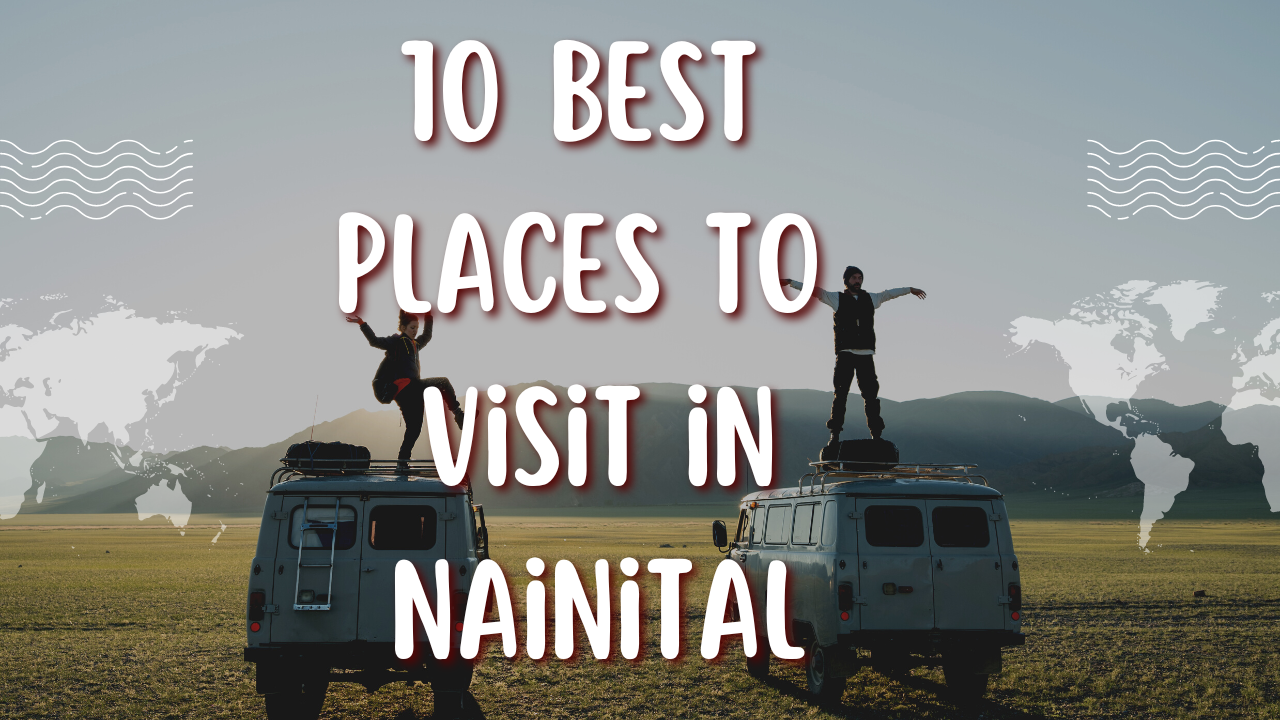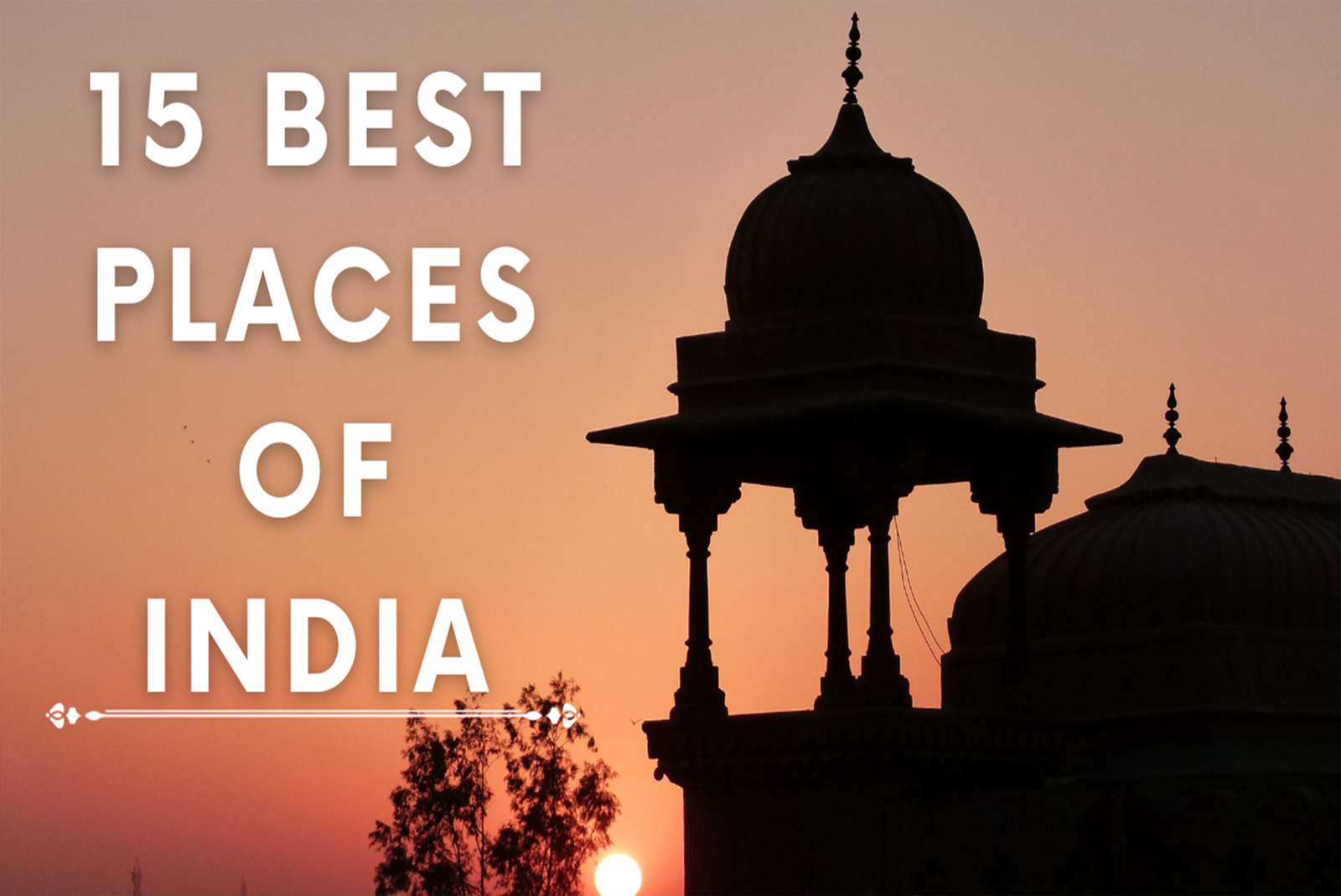12 Best Places to visit in Ladakh – Top Tourist Attractions in Ladakh

Ladakh is a destination unlike any other because of its exceptional fusion of unspoiled natural beauty, vibrant culture, and serene spirituality. Travel to these fascinating locations and allow Ladakh charm you.
Adventurers and contemplative travelers alike are drawn to Ladakh, a region known for its untamed scenery and historic monasteries. This is a guide to the must-see locations that best encapsulate this high-altitude desert.
So, here we have the 12 Best Places to visit in Ladakh :-
Table of Contents
1. Pangong Lake

Situated away at an elevation of more than 14,000 feet, Pangong Lake is a bright sight that shifts color in time with the sun’s movements. The lake is surrounded by stark, desolate mountains that provide a strange background, making it a photographer’s dream come true.
Tucked away at 4,350 meters above sea level in the vacant regions of Ladakh, India, Pangong Lake is a glittering gem that captivates the imagination and takes the breath away from any traveler fortunate enough to behold its splendor. This high-altitude lake, which spans the Indo-China border majestically and is surrounded by untamed mountains, provides an almost otherworldly visual display.
Pangong Lake is well known for its captivating blue tones. The lake changes color from a deep sapphire to a vivid turquoise depending on the time of day and the weather. The colors blend together to create a visual symphony that is soul-stirring.
Pangong Lake is surrounded by a peaceful silence that seems to permeate the very air because of its high altitude. Only the occasional ripple in the water breaks the stillness, creating an atmosphere of peace that is both serene and incredible.
Pangong Lake’s reflective surface reflects the surrounding mountains like a perfect sheet of glass. The mountains are bathed in pink and gold hues as the sun rises or sets, producing a surreal mirage that makes it difficult to distinguish between reality and fantasy.
The road to Pangong Lake takes you through the stunning Chang La Pass, one of the highest motorable passes in the world. The journey itself is an adventure, offering panoramic views of Ladakh’s stark beauty.
2. Enchanting Nubra Valley
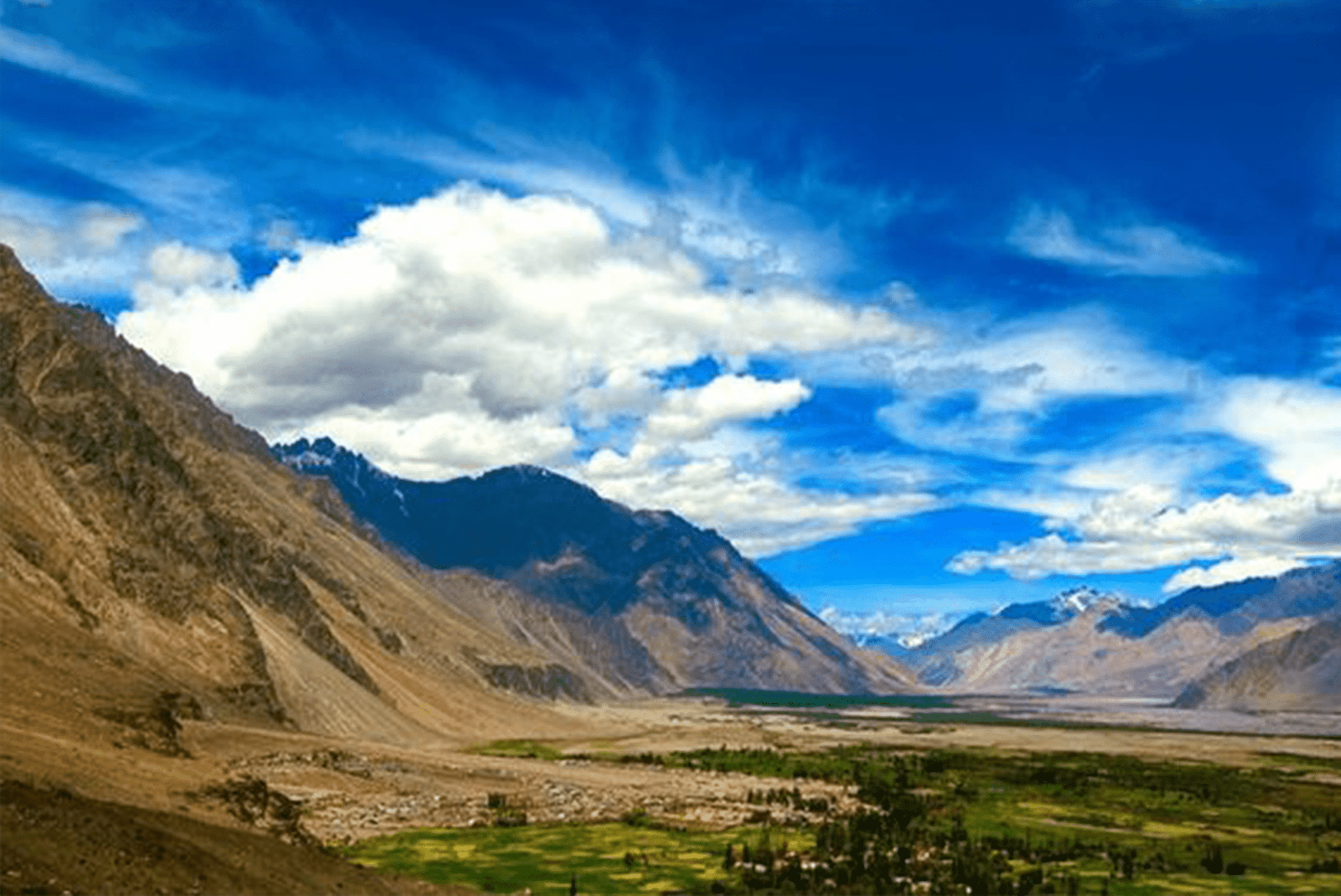
Nubra Valley is an immersive experience that speaks to the soul rather than merely being a place to visit. Nubra Valley invites you to escape into a world of peace and wonder, whether you’re hiking across sand dunes that resemble deserts, finding spiritual solace in historic monasteries, or just taking in the beauty of nature all around you. Nubra Valley is proof of the extraordinary diversity and beauty that the Himalayas cradle in their embrace, as you stand amidst their majestic grandeur.
Nubra Valley is a stargazer’s dream due to its high altitude and low levels of light pollution. The sky becomes a celestial canvas on clear nights, with stars that appear to be reachable.
One of the highest motorable passes in the world, Khardung La Pass, must be crossed en route to Nubra Valley. From this vantage point, you can see far-reaching deep valleys and snow-capped peaks that are truly breathtaking.
Visit the Samstanling Monastery to discover Nubra’s rich cultural tapestry. The monastery, adorned with colorful murals and antique objects, provides an insight into the area’s spiritual legacy.
Not only are the Hunder Sand Dunes visually stunning, but the double-humped Bactrian camels call them home. Riding a camel in the middle of this desolate desert setting is an unusual experience that gives your trip a hint of exotic charm.
3. Hunder Sand Dunes
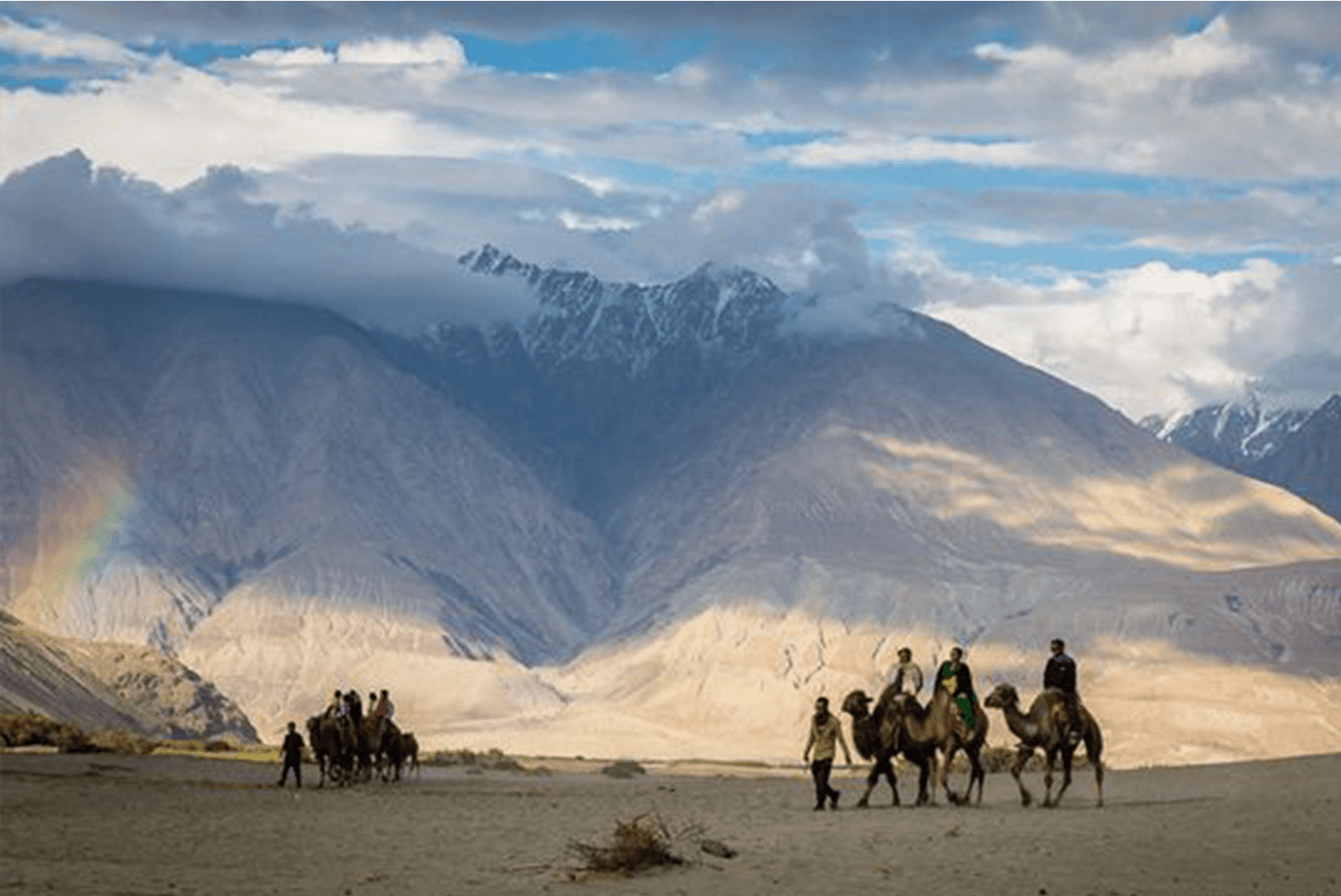
In the midst of the Himalayas, Hunder Dunes is an oasis of surprise and wonder rather than just a place to visit. Hunder offers a break from the ordinary, whether you’re drawn to the unique desert experience, the cultural exchanges with the nomadic communities, or just the peace that envelops the dunes. You’ll discover that Hunder Dunes is a monument to the extraordinary diversity that makes Ladakh a destination unlike any other as you walk across the golden sands and take in the mountain air.
The deep silence that permeates the landscape is one of Hunder Dunes‘ most alluring features. The peace and quiet, far from the bustle of the city, make it possible to spend time reflecting and connecting with nature.
Despite its desert appearance, Hunder is not devoid of water. Freshwater springs sporadically emerge from the sandy terrain, offering a surprising and welcome respite in this high-altitude desert.
Prepare yourself for expansive views of the surrounding mountains and Nubra Valley as you ascend the dunes. A striking and dramatic visual tapestry is created by the contrast between the sandy expanse and the snow-covered peaks.
Hunder Dunes are a place that defies expectations and adds a sense of surprise amidst the towering peaks of the Himalayas. They are tucked away in the isolated landscapes of Ladakh, India. This captivating location, renowned for its vast sand dunes resembling a desert, is a hidden treasure that invites visitors to discover the unexpected in Ladakh’s high-altitude regions. The bizarre scenery at Hunder Dunes, where the desert and mountains converge.
4. Magnetic Hill

As evidence of the wonders that can be discovered when we challenge the everyday and welcome the extraordinary, Magnetic Hill stands. The laws of gravity will appear to change in front of your eyes as you stand on this peculiar section of road, serving as a reminder that there are always new surprises to discover in the world.
Whether you are an experienced tourist or this is your first time visiting Ladakh, Magnetic Hill promises to be a memorable place to stop. It’s a moment when the natural world’s mysteries come to life and the ordinary becomes extraordinary.
The Magnetic Hill Visitor Center is interactive to improve the experience for visitors. You can learn more about the science and mythology underlying the phenomenon here, which will enhance your visit’s educational value.
Ladakh’s breathtaking beauty envelops Magnetic Hill, even beyond the magnetic phenomenon. The environment surrounding this gravitational anomaly is enhanced by the stark mountains, clear skies, and crisp air.
You will come upon a confusing optical illusion as you approach Magnetic Hill that defies rational thought. Cars that are in neutral seem to roll upwards, defying gravity and thrilling passengers with their delightful confusion.
5. Thiksey Monastery
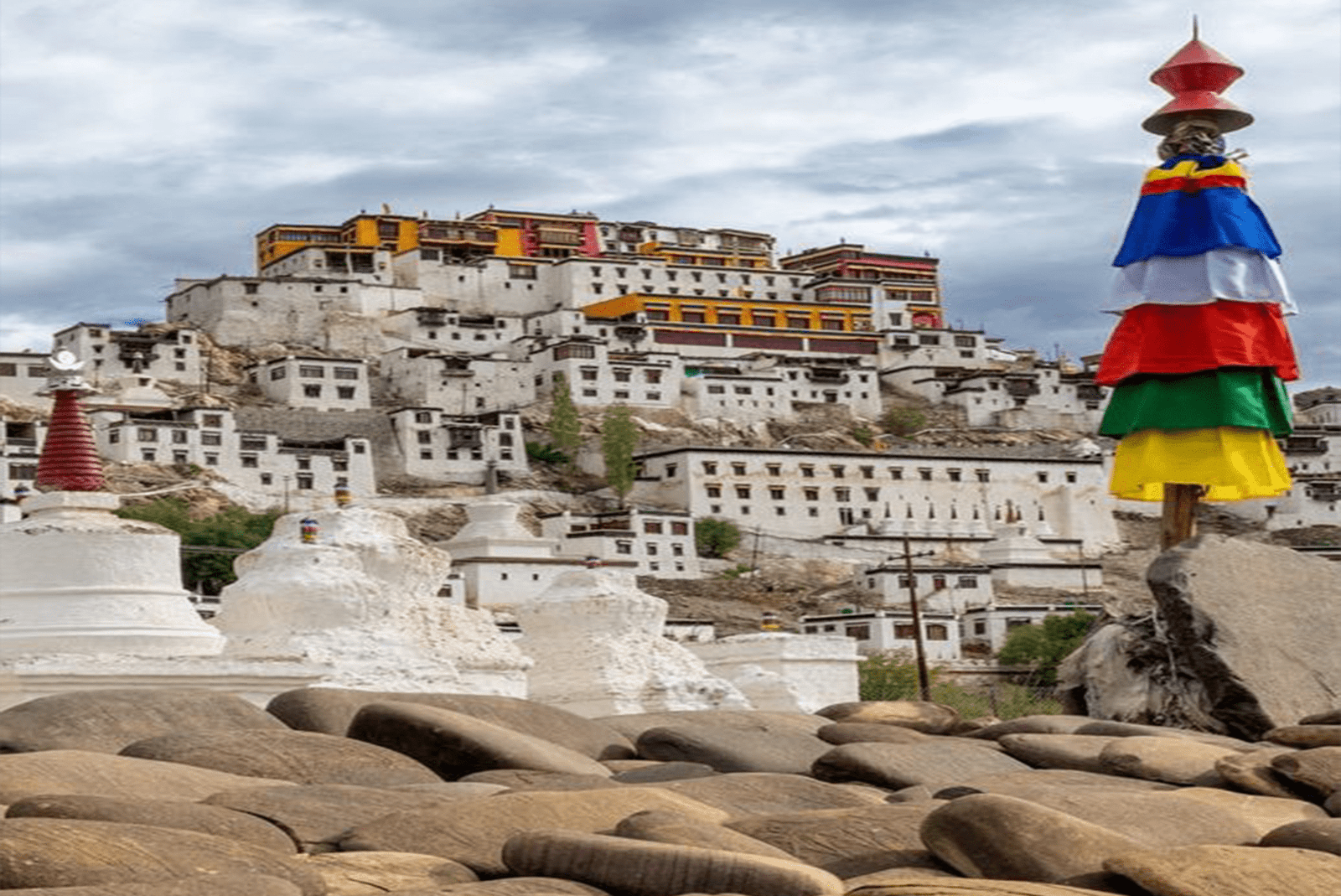
Thiksey Monastery is more than an architectural marvel; it’s a living testament to the resilience of Ladakhi culture and the enduring spirit of Buddhism in the Himalayas. Thiksey Monastery is a place that exists outside of time, where the past, present, and future come together to form a harmonious dance. You can experience this as you walk through its courtyards, take in its artistic beauty, and breathe in the spiritual energy that fills the space.
Thiksey Monastery is a Himalayan sanctuary for those seeking peace and spiritual comfort. It is sometimes referred to as “Little Potala” because of its resemblance to the Potala Palace in Lhasa, Tibet. The tranquil atmosphere is further enhanced by its elevated position, which offers expansive views of the surrounding mountains.
The monastery’s architecture, which combines Tibetan and Ladakhi elements, is identified by its bright murals, golden spires, and white-washed walls. The complex is made up of several buildings, each of which tells a centuries-long tale of skill and dedication.
The magnificent, mind-bogglingly tall Maitreya Buddha statue dominates the courtyard. The statue, which is crafted with great attention to detail, is a representation of the future Buddha and radiates kindness and generosity.
6. Hemis Monastery
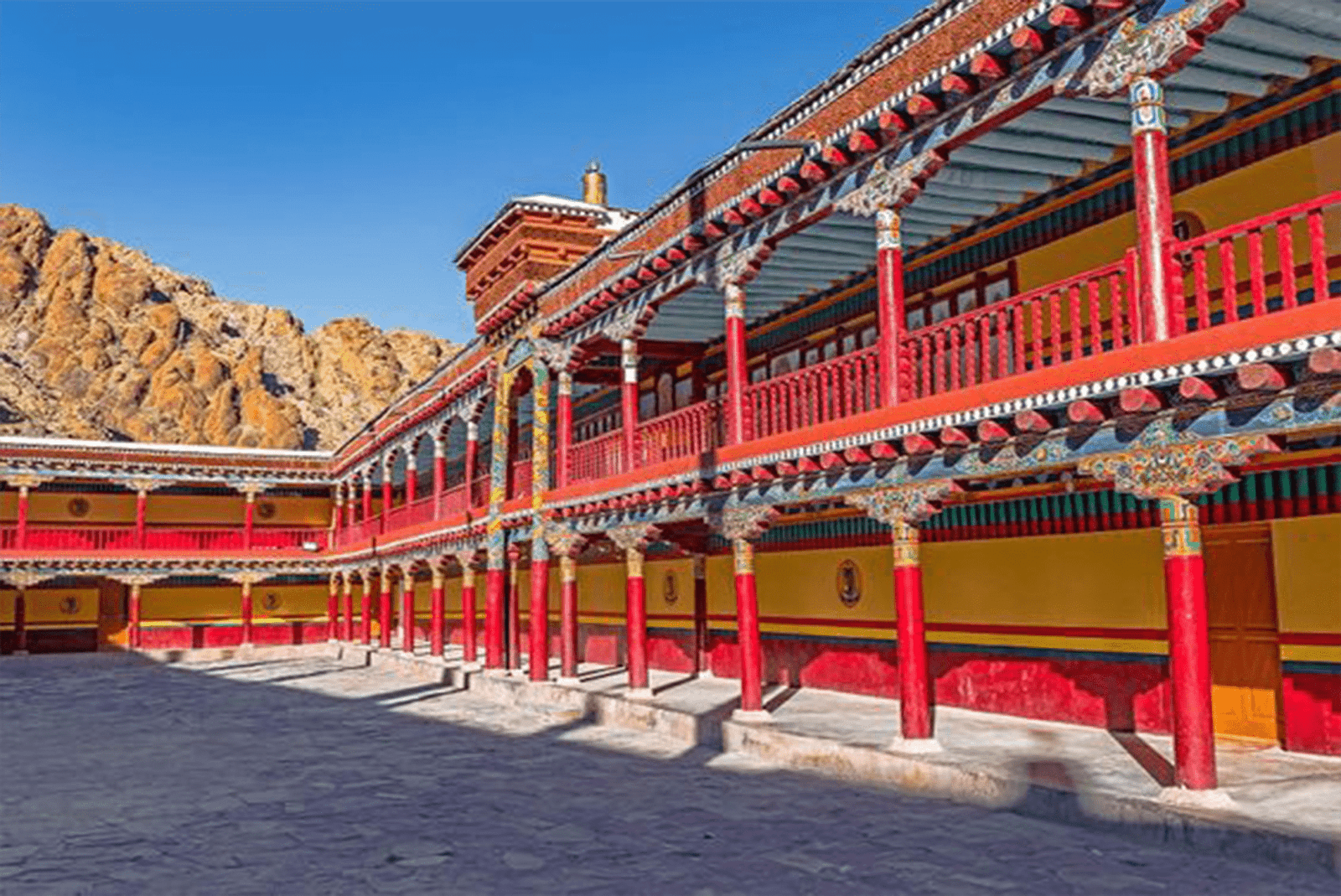
Hemis Monastery is not just a destination; it’s a spiritual oasis that invites you to embark on a journey of cultural immersion and self-discovery. Hemis Monastery promises an experience that goes beyond the ordinary, whether you take in the vibrant festivals, marvel at the architectural wonders, or just find comfort in the peace of the Himalayas. You will sense the enduring spirit of Ladakh’s spiritual heritage as well as the resonance of centuries-old traditions as soon as you enter this hallowed space.
The Himalayan peaks that encircle Hemis Monastery give the impression of being a hidden gem just waiting to be found. Its valley setting adds a sense of solitude that heightens the meditative atmosphere.
Hemis Monastery’s architecture, which combines Ladakhi and Tibetan design elements, is distinguished by vivid colors, finely carved woodwork, and elaborate Thangka paintings. The complex’s buildings exhibit a seamless integration with the surrounding environment.
Another religious festival that attracts both curious tourists and ardent followers is Hemis Tsechu. The monastery becomes a center of spiritual activity during this time, with monks participating in rituals, performances, and prayer sessions.
Discover the monastery’s on-site museum, which has an extensive collection of antique manuscripts, religious relics, and artifacts. A glimpse into the past and cultural development of Hemis and its monastic community can be had from the exhibits.
7. Tso Moriri Lake
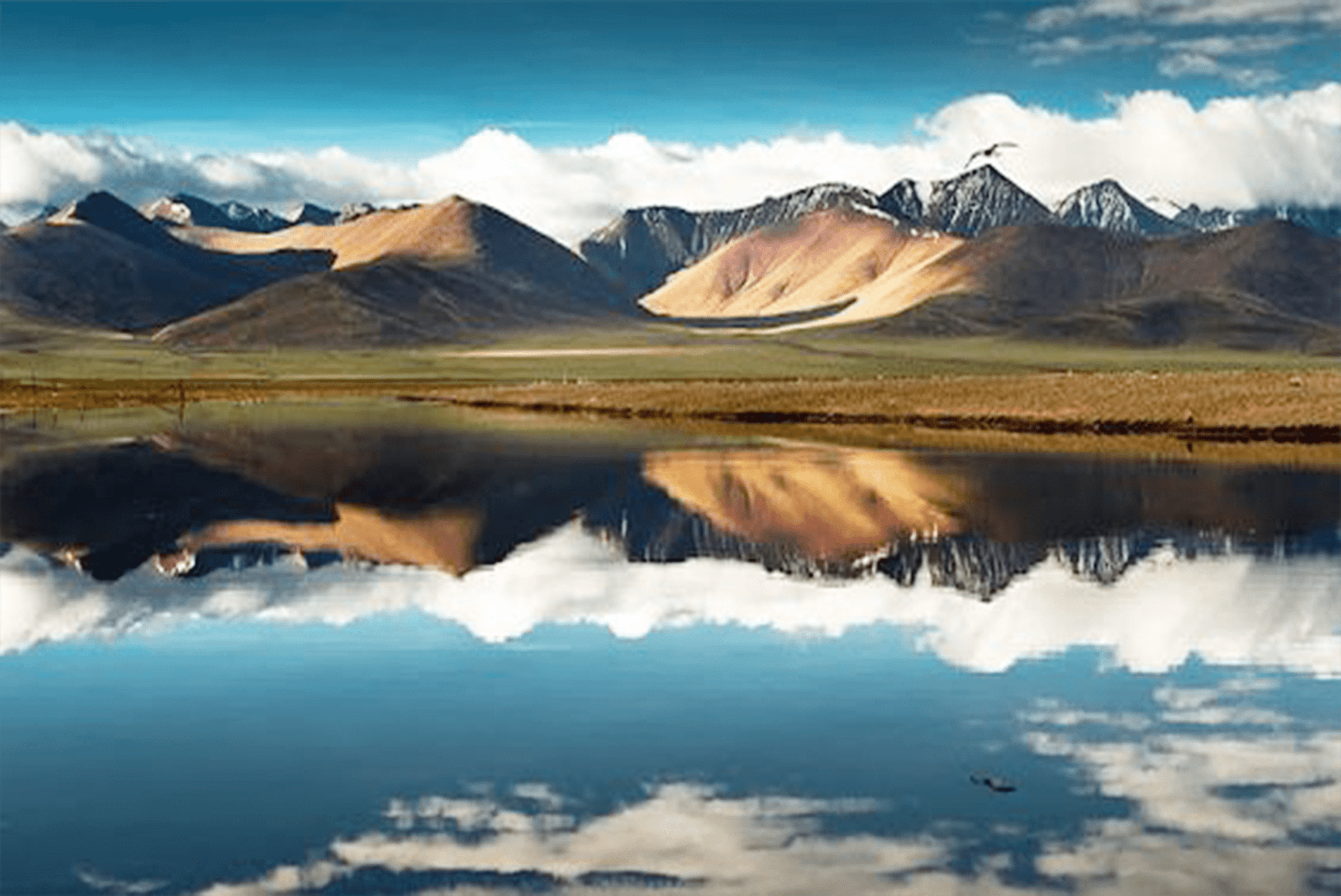
Tso Moriri Lake is more than a destination; it’s a sensory experience, a visual symphony, and a journey into the heart of untouched natural beauty. Tso Moriri offers a unique experience, whether you come for the amazing scenery, the chance to interact with nomadic people, or just to take comfort in the quiet altitude. Experience the tranquility that envelops you as you stand by its shores and you’ll see why this high-altitude lake serves as more than just a tourist attraction.
Tso Moriri provides trekking options that pass through the Changthang Plateau for those with an adventurous spirit. With the lake as your constant companion, the trek lets you fully experience the unspoiled beauty of the area.
Tso Moriri lies on the vast Changthang Plateau, a panoramic canvas of mountains, fields and trails used by nomadic people. Discovering this elevated terrain enables you to fully appreciate the pure beauty of Ladakh’s topography.
Camp beside the shores of Tso Moriri to fully immerse yourself in its magic. Without the interference of city lights, the night sky becomes a canvas of stars, providing a looking at stars experience that is similar to traveling through space.
Tso Moriri Lake is located far from the beaten path in the Changthang area. Its isolation heightens the sense of discovery and gives the impression that the place is unspoiled and pure.
8. Ancient Shey Monastery
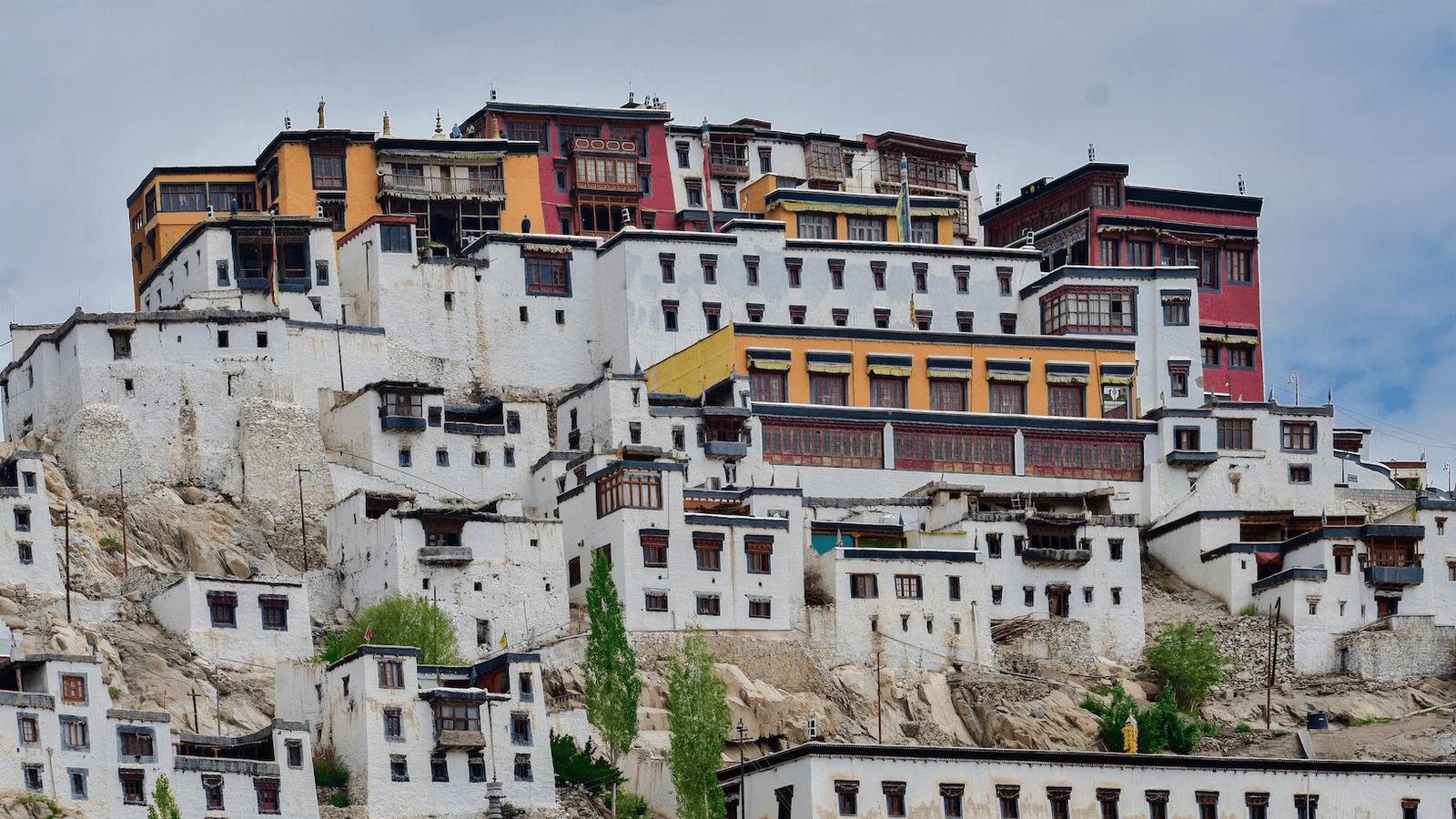
Growing silently through centuries of history and spirituality, Shey Monastery is nestled in Ladakh’s picturesque landscapes. This historic monastery, perched atop a hillock with a view of the Indus Valley, is more than just an architectural wonder—it’s a live example of Ladakh’s rich cultural legacy and spiritual heritage.
The Ladakh kings used Shey Monastery, also called Shey Palace, as their summer retreat when it was built in the 17th century. You can sense the echoes of a bygone era as you stroll through its halls and courtyards.
The Shey Palace, a former royal home of the Ladakh kings, towers over the monastery. The palace tells stories of the region’s royal past through murals and sculptures that complement its unique Tibetan architecture.
For the adventurous at heart, consider embarking on the Thiksey-Shey-Druk Padma Karpo Trek. This pilgrimage on foot takes you through the scenic landscapes connecting Shey with nearby monasteries, offering a deeper immersion into Ladakh’s spiritual tapestry.
The views of the Indus Valley from Shey Monastery’s vantage point are truly amazing. The panorama created by the winding river, random fields, and far-off mountains sticks in your mind.
9. Chang La Pass
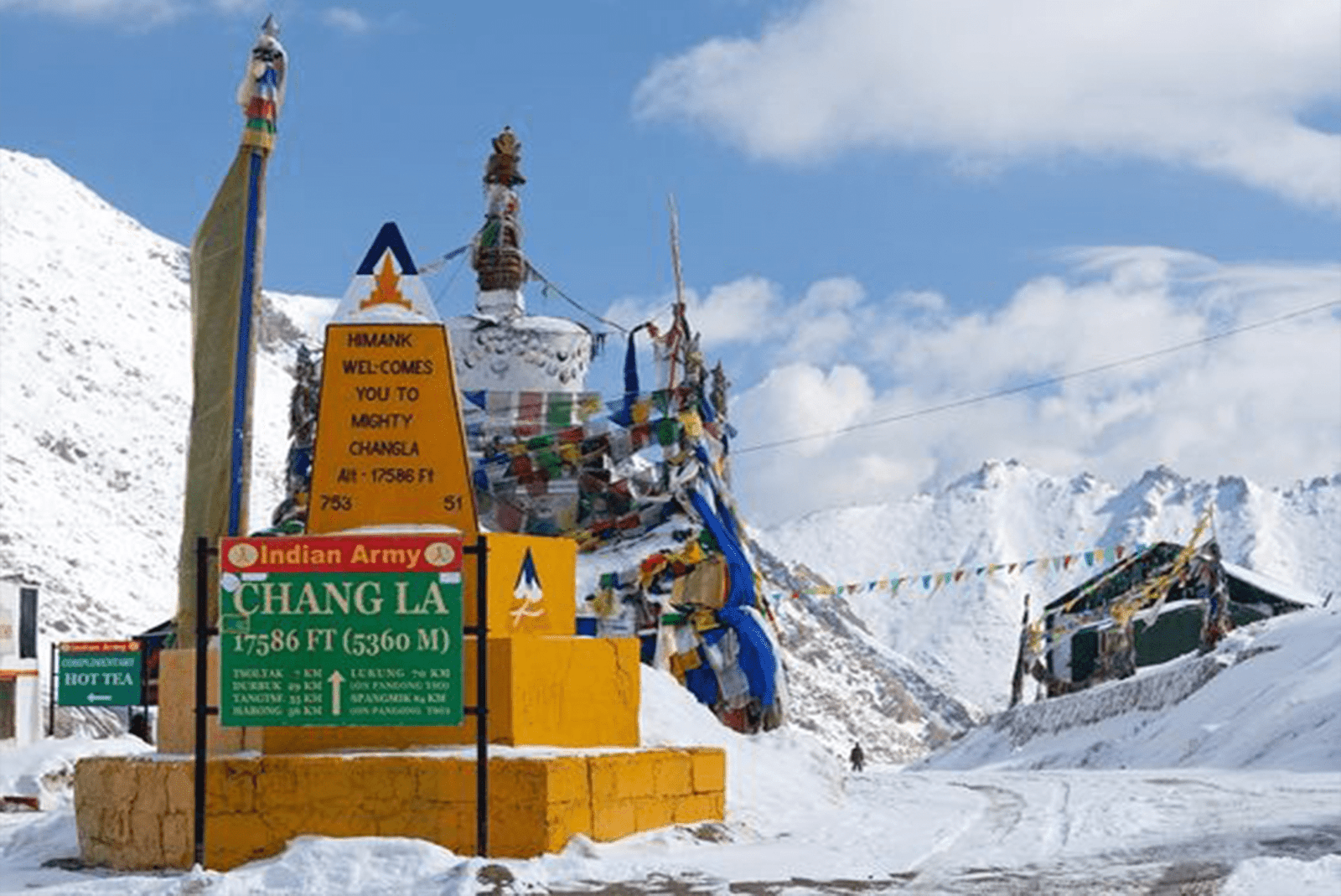
Situated in the harsh mountains of Ladakh, Chang La Pass is proof of the Himalayas’ uncontrolled elegance and amazing heights. This mountain pass, one of the highest motorable passes in the world, connects the Ladakh valleys and gives access to the dreamlike scenery of the Nubra Valley. It also makes for an exciting travel experience.
At an elevation of 5,360 meters (17,590 feet), Chang La Pass proudly holds the title of one of the highest motorable roads globally. The journey to its summit is a triumph over altitude, a thrilling ascent into the heart of the Himalayas.
You get more and more expansive views as you climb Chang La. Every snapshot becomes a photographer’s dream thanks to the visual textile created by the snow-capped peaks, deep valleys, and winding roads.
Due to its strategic location near the border with China, Chang La is home to military outposts. These structures, perched against the stark backdrop, stand as a testament to the resilience required to thrive in this high-altitude terrain.
Chang La Lake is a calm haven amidst the mountains that is located close to the pass. To those who dare to explore its shores, the pristine waters and the solitude all around provide a tranquil haven.
10. Leh Palace

Leh Palace, sitting above a rocky peak in the center of Ladakh, silently records the centuries that have passed beneath its regal focus. This old the fortress, a marvel of medieval Tibetan architecture, provides visitors with a window into the past while also telling the stories of Ladakh’s royal past.
The 17th-century Leh Palace, constructed by King Sengge Namgyal, is an example of medieval Tibet’s architectural mastery. With its construction made of stone and mud, the palace rises majestically against the bleak Ladakhi landscape, glowing strength and regality.
Perched at a height of more than 3,500 meters, Leh Palace provides stunning views of the surrounding mountains and the town of Leh. The Stok Kangri mountain range and the meandering Indus River enhance the breathtaking view from the palace windows.
A historical tapestry that tells the tales of Ladakh’s royal lineage can be found as you meander through the maze-like hallways and chambers of Leh Palace. As the Namgyal dynasty’s home, the palace offered insights into the political and cultural development of the area.
Discover the luxurious lifestyle of Ladakh’s kings by touring the royal apartments in Leh Palace. Luxurious rooms that transport you to a bygone era of grandeur are furnished with traditional Tibetan thangkas, elaborate wooden fixtures, and antique artifacts.
11. Shanti Stupa
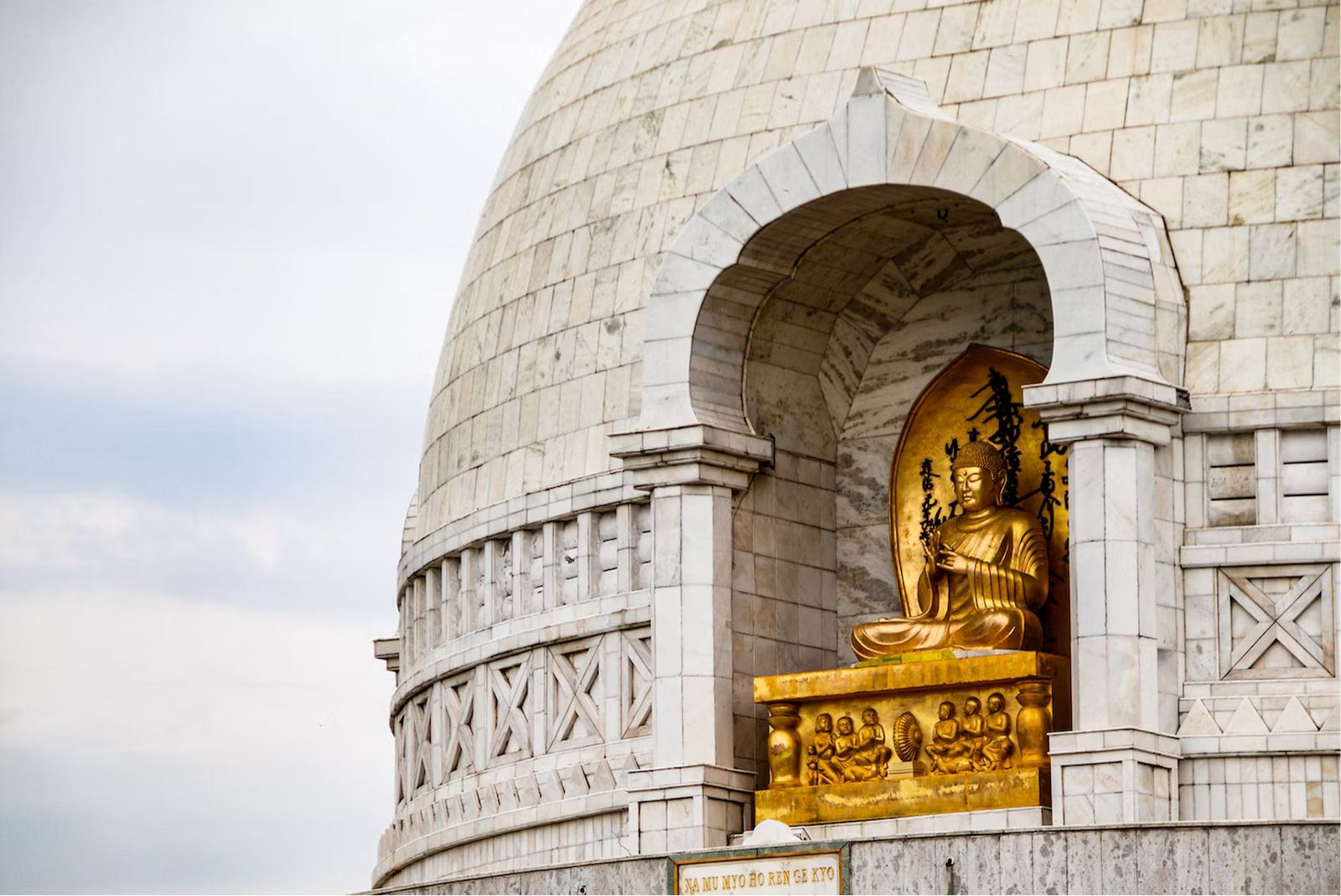
Luminously representing peace in the heart of the Himalayas, Shanti Stupa is perched atop a hill in Ladakh’s enchanting landscapes. Constructed with the intention of fostering global peace and concord, this dazzling white stupa provides not only with amazing sweeping vistas but also functions as a spiritual haven that surpasses cultural barriers.
Shanti Stupa, inaugurated by the 14th Dalai Lama in 1985, was conceived with the noble intention of spreading the message of peace and unity across the globe. Its dazzling white structure, against the rough mountains in the background, is proof of the desire for harmony that unites all people.
Shanti Stupa is not merely an architectural marvel; it’s a place for spiritual contemplation. In the middle of the majestic mountains, the tranquil atmosphere begs guests to stop, think, and find comfort—a haven for those looking for inner peace.
Trekking to Shanti Stupa is an energizing pilgrimage for the daring. The experience is enhanced physically and spiritually by walking up the hillside, which makes reaching the stupa all the more rewarding.
Shanti Stupa turns into a brilliant beacon as dusk draws in. The light from the stupa creates a gentle glow that breaks through the gloom. The Ladakhi night sky is made more magical by the ethereal atmosphere.
12. Zanskar Valley
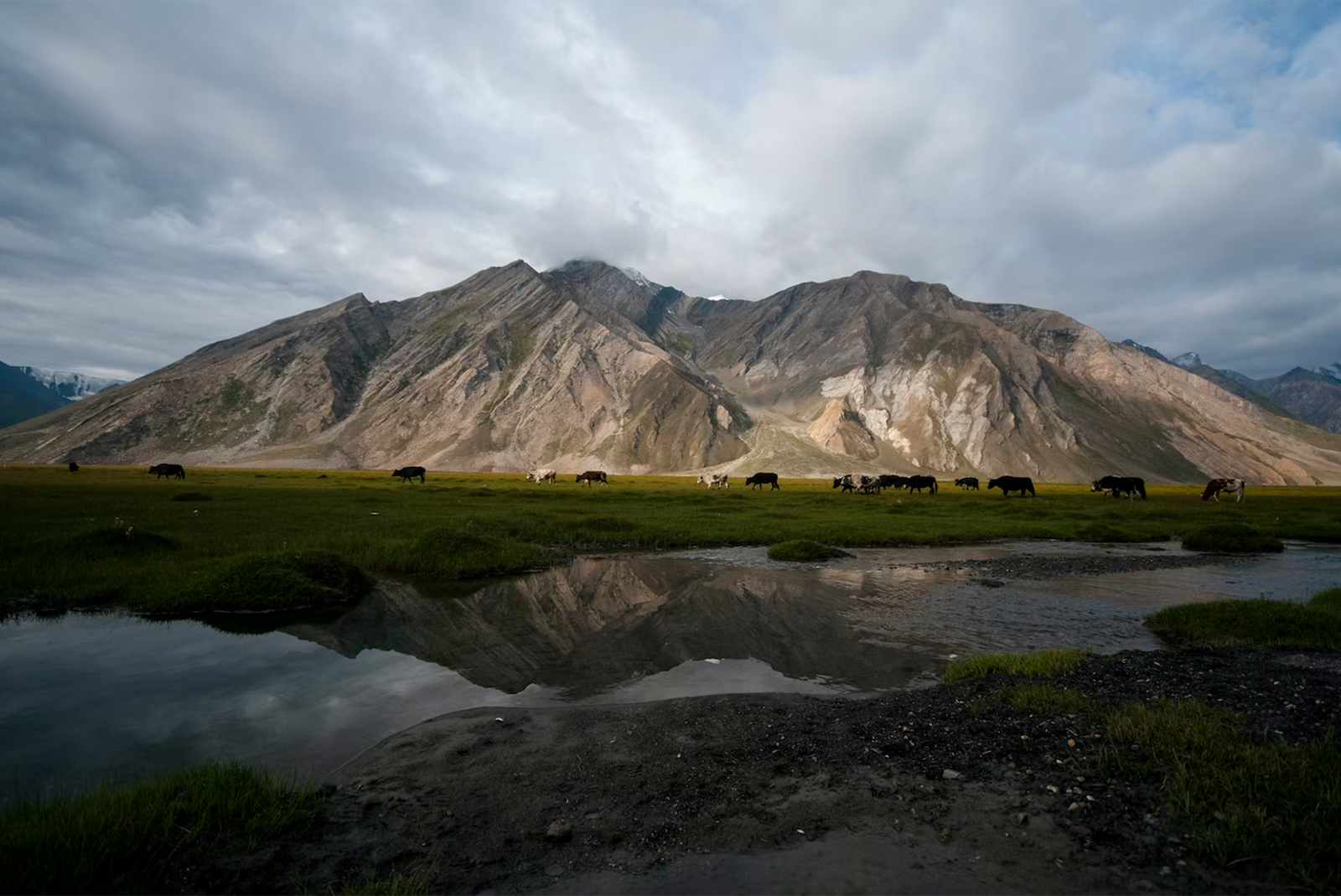
Zanskar Valley, tucked away in the rough embrace of the Himalayas, is a pristine canvas of wild beauty. The valley’s meandering Zanskar River, towering peaks, and historic monasteries combine to create a scene that is soul-stirring. Situated in the Ladakh region of India, this Himalayan sanctuary offers an experience that goes beyond the ordinary, combining spirituality, adventure, and incredible scenery.
Zanskar Valley’s remoteness adds to its allure. This high-altitude sanctuary, tucked away from the hustle and bustle of city life, welcomes explorers and lone travelers to immerse themselves in a pure, unspoiled environment.
Zanskar Valley is commonly associated with the Chadar Trek, which involves traversing the frozen Zanskar River in winter. The river turns into a crystal-clear path, and brave hikers set out on a bizarre journey through the frozen void encircled by sheer canyon walls.
Ancient monasteries dot the valley, acting as spiritual gardens amidst the untamed landscape. Locations such as Karsha, Phugtal and Stongdey Monasteries provide an insight into Zanskar’s diverse religious and cultural landscape.
Zanskar River Rafting is an exciting experience for those looking for an adrenaline rush. Rafters can enjoy an exciting journey through the deep gorges that the river carves, uncovering remote areas of the valley that are not reachable by car.



